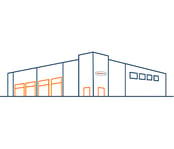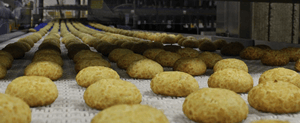For Bellisio Foods, a frozen food manufacturer based in Minneapolis, the biggest cold chain challenge of late has been a dearth of warehouse space. “There’s simply not enough of it in the United States to service the multitude of products that require frozen temperatures,” says Matthew Leuthold, the company’s logistics manager.
Capacity is especially tight in areas near the East and West Coast ports. “A lot of seafood is imported into the United States and consumes a lot of that space,” Leuthold says. “And then ice cream is a massive consumer of that warehouse space.”
Bellisio produces frozen foods under brand names such as Michelina’s, Boston Market, Atkins, and White Castle; it also provides contract manufacturing. From production facilities in Jackson and Archbold, Ohio and Vernon, California, it ships product to the distribution centers of virtually every retail chain in the country that sells groceries.
Bellisio has avoided the worst of the warehouse crunch because, just before the pandemic distorted supply chains around the world, it finished building a large, automated frozen warehouse at the Jackson facility. The goal was to handle anticipated growth.
“Utilizing third-party warehousing can be quite expensive, especially when the market is very tight,” Leuthold says. “Rather than rely on what would be available in the marketplace, we thought it best to have our own facility.”
But Bellisio does rely on a third party—ODW Logistics of Columbus, Ohio—for efficient transportation. “We utilize their optimization technology to take a multitude of less-than-truckload (LTL) orders and consolidate them into full truck orders,” Leuthold says. “This fills the gap in frozen transportation, where there aren’t reliable, true LTL carriers. We’ve leveraged their technology to make sure we’re building the best possible multi-stop loads for a truck to haul.”
Those frozen food carriers do a good job of maintaining the cold chain. “Most refrigerated equipment on the road has improved in terms of technology quite significantly in the last decade, with more efficient refrigeration, better real-time monitoring of temperatures inside the trailer, and quicker adjustments to correct when things start to get out of line,” Leuthold says.
Source: Inbound Logistics | https://magazine.inboundlogistics.com/view/741499650/38/












